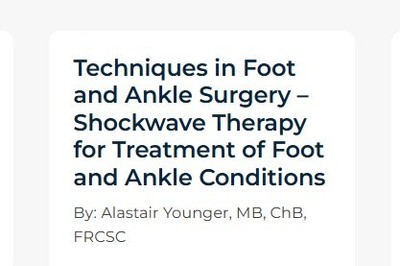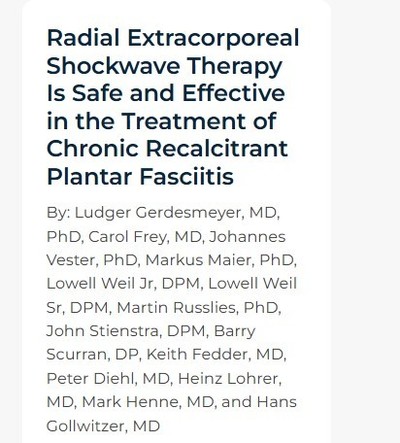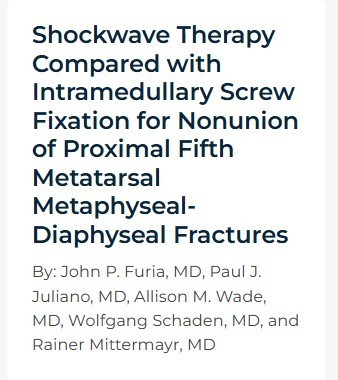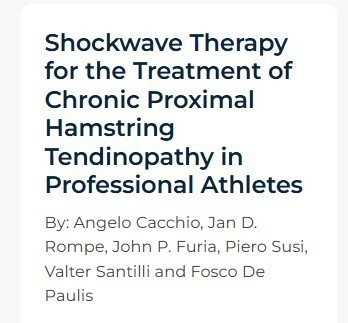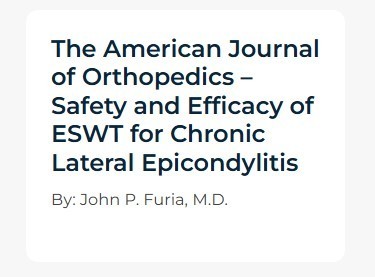What is Shockwave Therapy?
Shockwave therapy is a non-invasive treatment that utilizes high-intensity acoustic waves directed at targeted tissues to stimulate healing. By applying controlled stress to the tissue, it helps break down scar tissue, enhance microcirculation, and accelerate local metabolism. This therapy offers an alternative to surgery or medication and can serve as a valuable complement to rehabilitation.
Shockwave therapy has demonstrated remarkable effectiveness in treating orthopedic conditions. Research highlights its therapeutic benefits, including reducing inflammation, improving microcirculation, and boosting collagen production. From rotator cuff injuries to plantar fasciitis and greater trochanteric pain syndrome, these benefits help alleviate pain and accelerate healing.
At PhysioHarder Therapy Clinic, we use shockwave therapy as a tool to successfully treat both acute and chronic musculoskeletal pain, especially when it significantly impacts mobility or quality of life. The shockwave device used at this location is from Stortz Medical, which is directly from Shockwave Canada.
Click Here to learn more.
How Shockwave Therapy Works:
Direct Reference from Shockwave Canada
We know shockwave therapy is effective – but how exactly does it work?
Shockwave therapy accelerates the healing process in the body by stimulating the metabolism and enhancing blood circulation to regenerate damaged tissue.
Strong energy pulses are applied to the affected area for short periods of time, creating micro-cavitation bubbles that expand and burst. The force created by these bubbles stimulates cells in the body that are responsible for bone and connective tissue healing.
Shockwave therapy is the most effective in cases where the human body has not been able to heal itself on its own.
In shockwave therapy, an acoustic pressure wave is transmitted to the body tissue and, consequently, to the painful area. The pressure wave created at the point of contact transmits radially inside the patient’s body.
What Shockwave Therapy Can Treat:
Each Link Below is a Referenced Source from Shockwave Canada
- Plantarfasciitis
- Treatment of Tendinopathy
- Bursitis
- Tendonitis
- Frozen Shoulder (Adhesive Capsullitis)
- Tennis Elbow
- Golfer's Elbow
- Stress Fractures
- Achilles Teninopathy
- Hamstring Muscle Injuries
- Stiff Big Toe (Hallux Rigidus)
- Scar Tissue
- Broken Bones that have Failed to Heal (nonunions)
- Heel Spurs
- Bone Healing Enhancement
- Patellar Tendonitis
- Myofascial Trigger Points
- Calcific Tendonitis of the Rotator Cuff
- Shoulder Pain
- Shin Splints or Medial Tibial Stress Syndrome
- Muscle & Connective Tissue Injuries
- Greater Trochanteric Pain Syndrome
Shockwave therapy is not normally used with patients who have bleeding disorders (ie. on anticoagulant therapy or hemophilia), cement implants, local infection, open wounds, and cancer. Your physiotherapist will assess and determine if you can safely use this treatment!
What Does Shockwave Feel Like?
The experience of shockwave therapy can differ for each individual. Most commonly, it feels like a series of quick, focused pulses or 'taps' against the skin. Although some discomfort may be experienced, the treatment is typically well-tolerated and not regarded as painful. Additionally, the intensity can be adjusted to maximize comfort throughout the session.
Is Shockwave Therapy Safe?
While shockwave therapy is widely recognized as safe and non-invasive, there are some potential risks to be aware of:
- Pain or Discomfort: Mild pain or discomfort may occur during or after the treatment. However, this is usually temporary and tends to resolve within a few days.
- Swelling and Bruising: The treated area may experience slight swelling or bruising, which typically subsides within a few days to a week.
- Temporary Pain Increase: Some individuals may notice a brief increase in pain immediately following the session, but this effect is usually short-lived.
Contraindications: Who Should Avoid Shockwave?
Shockwave therapy may not be suitable for everyone. It is generally not recommended in the following cases:
- Pregnancy: Due to potential risks and unknown effects on the fetus, this treatment is not advised for pregnant women.
- Bleeding Disorders: Individuals with bleeding disorders or those taking anticoagulant medications should avoid shockwave therapy, as it may increase the risk of bleeding or bruising.
- Cancer: Patients with cancer, especially in or near the treatment area, should refrain from this therapy, as it may interfere with tumor management or promote growth.
- Pacemakers: Individuals with pacemakers shoudl avoid, as it may interfere with the function. For further understanding if shockwave is safe in this situation you will need to contact your physician for further details and medical recommendations.
What are the Benefits of Shockwave Therapy?
- Helps break up calcium deposits in soft tissues, such as tendons, reducing stiffness and discomfort.
- Reduces acute and chronic pain by disrupting pain transmission pathways.
- Enhance tissue regeneration.
- Stimulates the body's natural repair mechanisms, speeding up the healing process.
- Improves tissue elasticity by softening scar tissue and adhesions
- Enhances joint and muscle flexibility by reducing pain and loosening tightened or scarred tissues.
- Encourages the formation of new collagen fibers, essential for the repair and maintenance of healthy tissues.
- Promotes increased blood circulation and healing to the treated area, enhancing the delivery of oxygen and nutrients to damaged tissues.
- Allows patients to resume normal activities shortly after treatment, as there’s minimal downtime.








